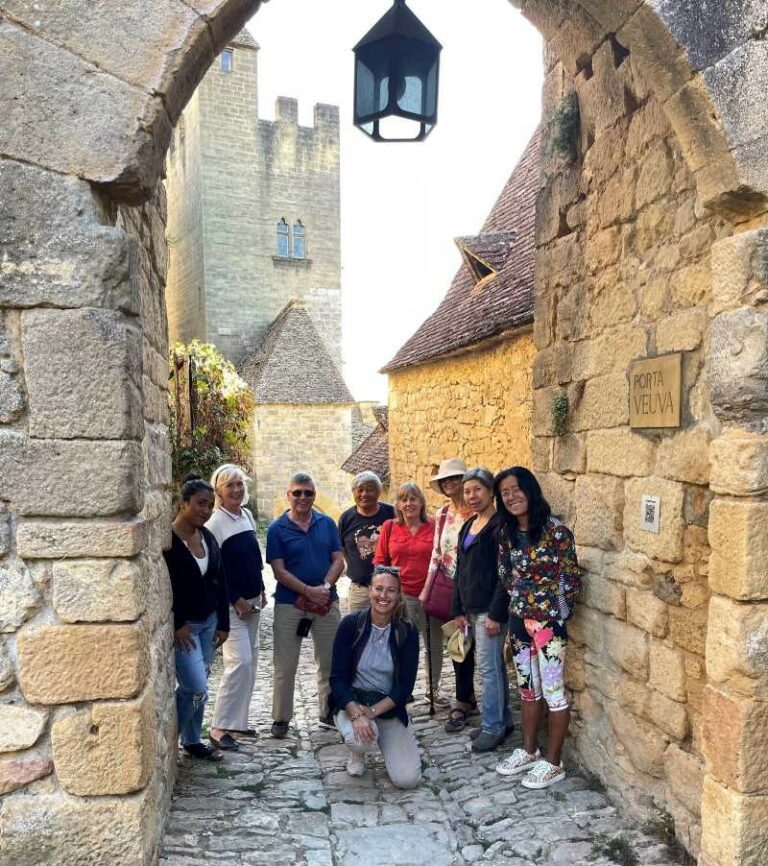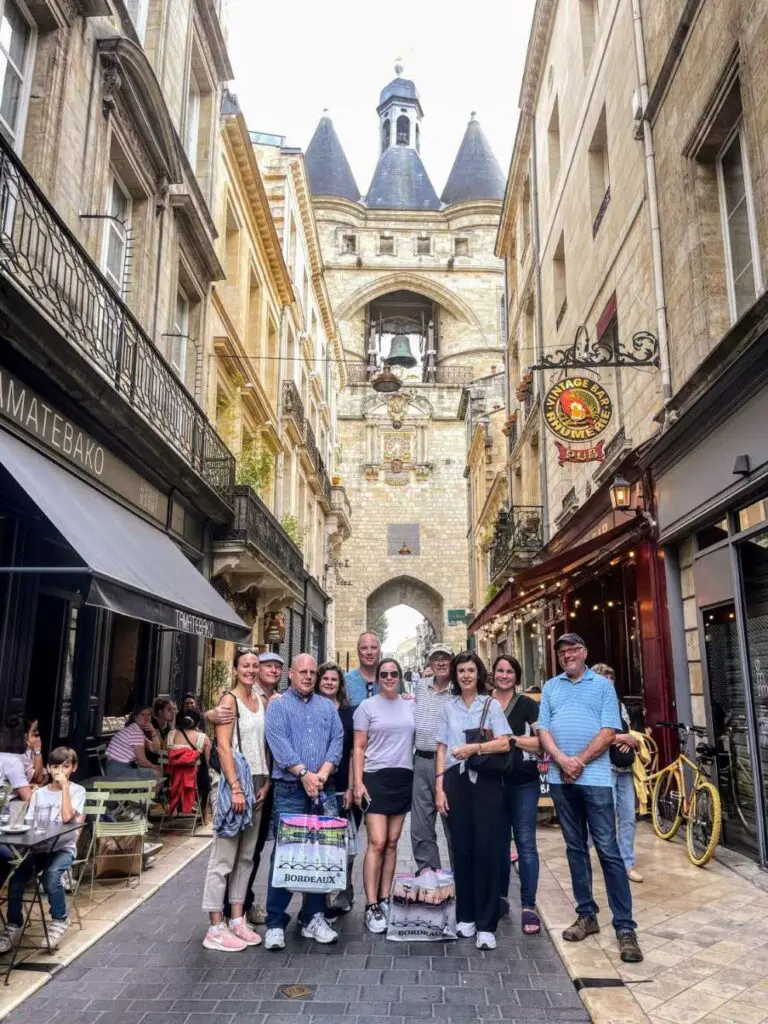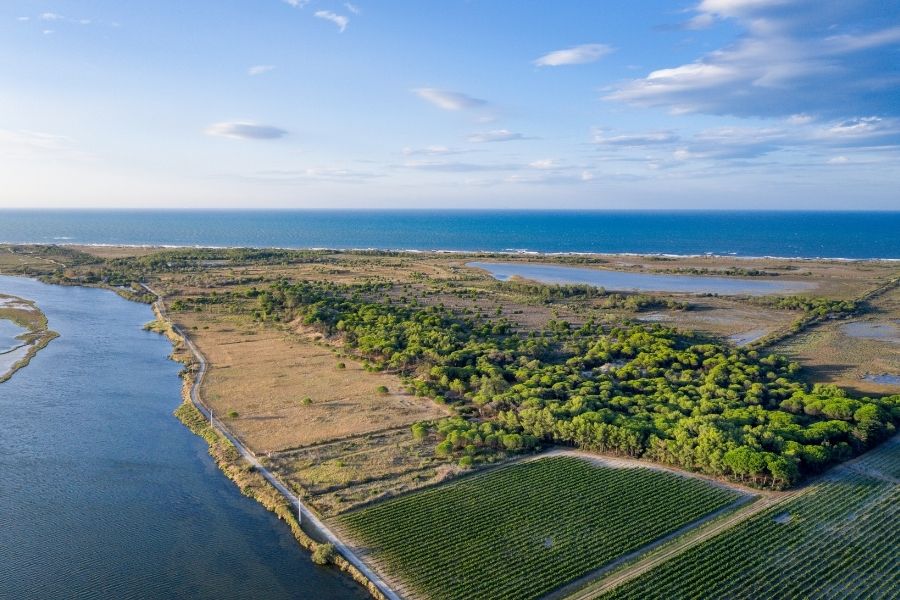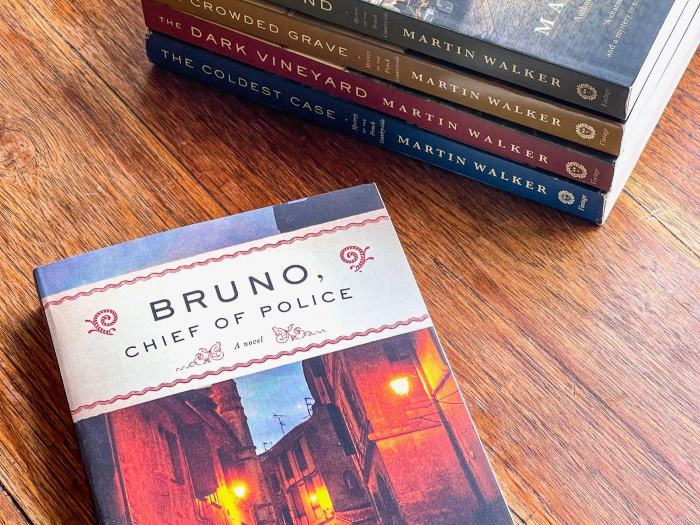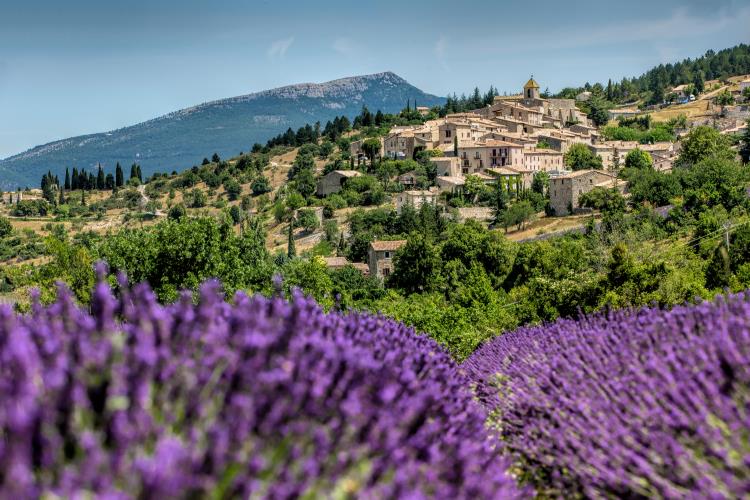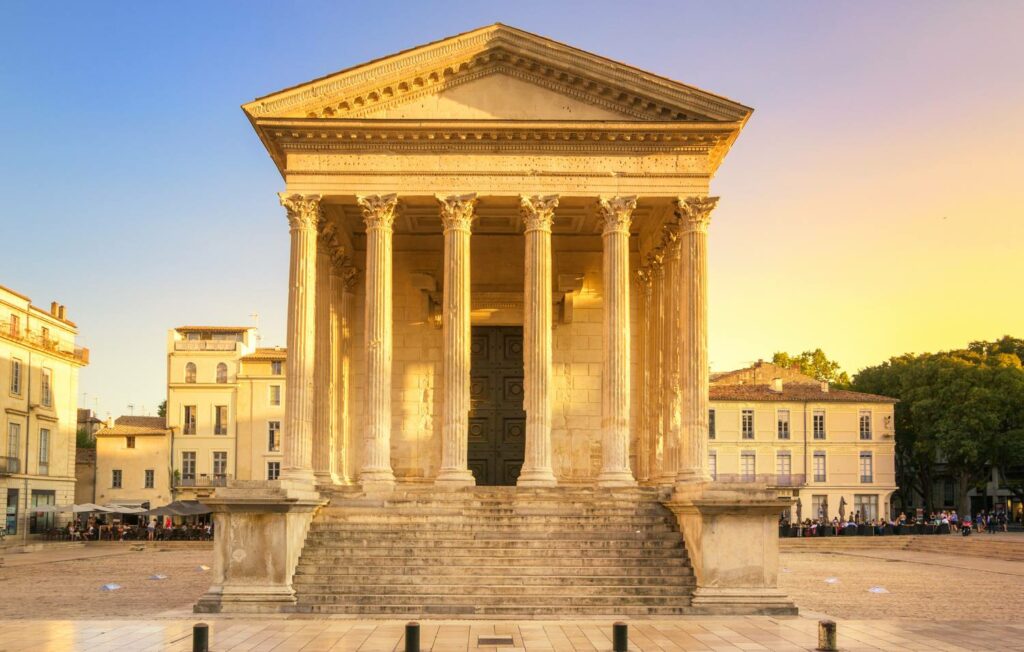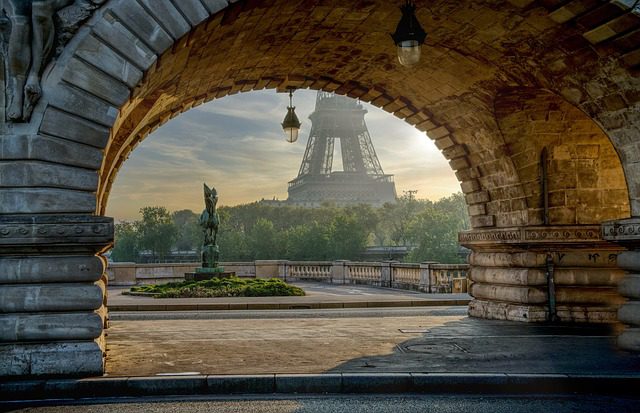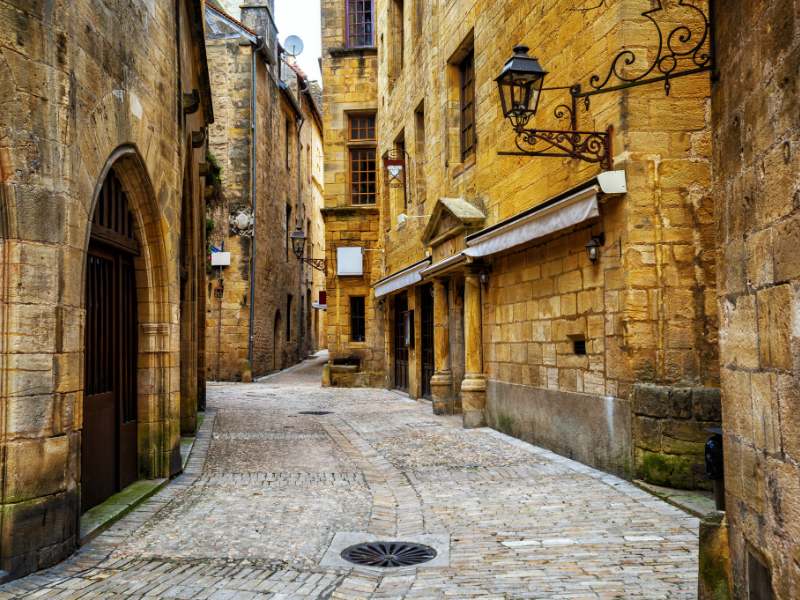Last update:
Rocamadour, France: Cliff-hanging Village that You Must Visit Once in Your Life

1. A Dramatic Medieval Pilgrimage Site
Rocamadour, a breathtaking medieval pilgrimage site, perched on a limestone cliff in southwestern France, has been a compelling destination for pilgrims throughout the centuries. Notable figures, including kings Henri II Plantagenet of England in 1159, Louis IX of France in 1244, and Philip IV Le Bel of France in 1304, were drawn to this holy site, captivated by its rich collection of relics, enduring legends, miraculous stories but also by the incredible landscape and architecture that make Rocamadour so mystical.
Nestled deep in the French countryside, on the edge of the Alzou Canyon in the Dordogne Valley, the 390-feet-tall cliff-hanging village is described by a local proverb as “homes on the river, churches on the churches, rocks on the rocks, castle on the rock”.
Built on three levels, the village is entirely pedestrian.
On the lowest slopes lies the settlement with its main street, featuring an array of quaint eateries and shops. The second level is home to the sanctuary dating back to the 12th century, which includes a basilica, a crypt, and seven chapels, including the revered Chapel Notre-Dame, housing the relics that have attracted pilgrims for centuries. Finally, the Way of the Cross leads to the cliff’s summit where the 19th-century castle and ramparts, constructed upon the foundations of a 14th-century fortress, command a view over the village and the valley.
This stratification echoes the historical social organization of the Middle Ages: nobility resided on the upper floor, the clergy at the city’s center, and the secular world closest to the valley.
You can reach Rocamadour in just a 3-hour drive from Bordeaux. Bordeaux, a beautiful French city worth visiting, serves as an ideal starting point for your road trip. With its airport and train station, Bordeaux is a convenient hub city. Toulouse could also be considered as another strategic base for your travels.
Keep reading if you would like to discover the intriguing history and legends that have drawn pilgrims to this site for centuries.
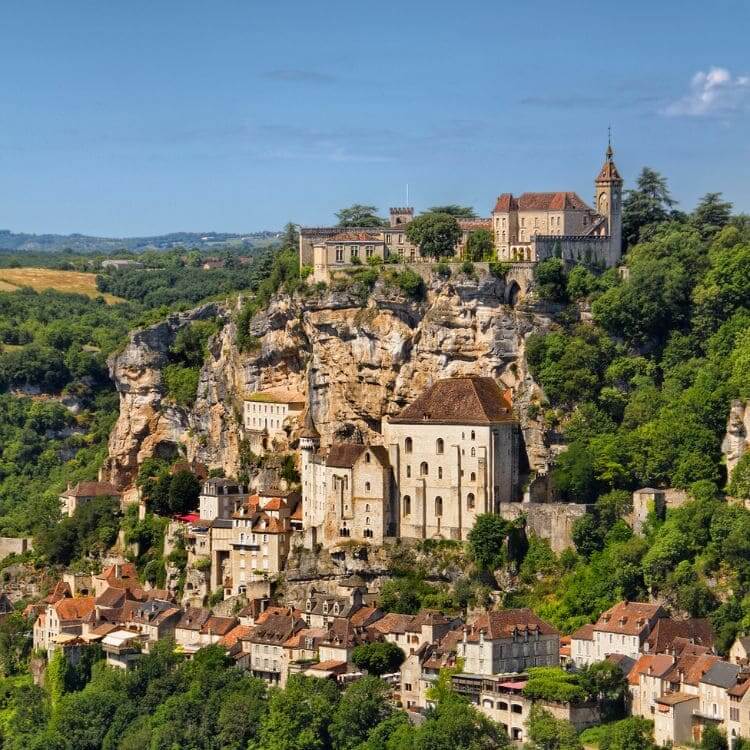
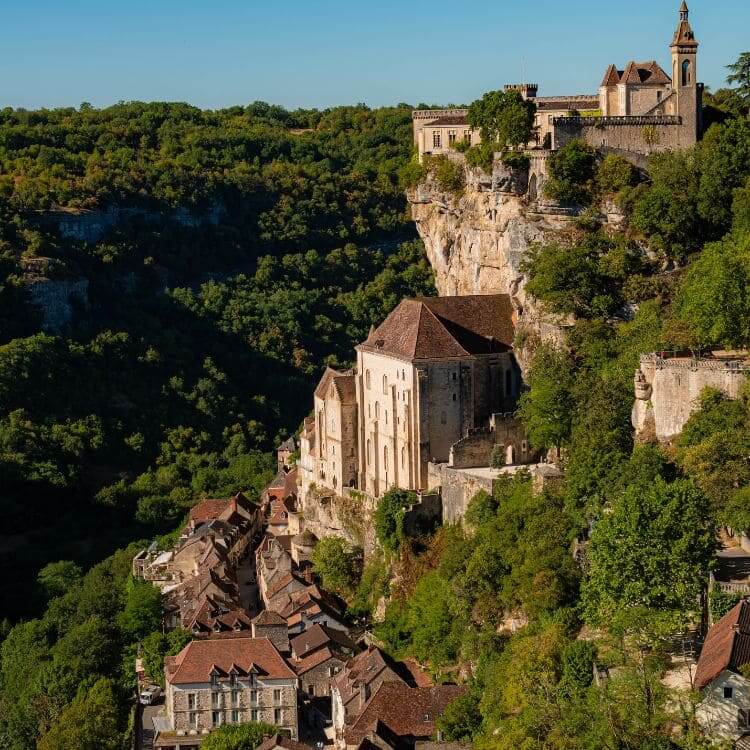
2. Miracles, Myths and Faith: The Rise of Rocamadour
The pilgrimage: an important part of medieval Christian life
The goal of medieval pilgrimages in Christianity went beyond physical travel; It was a profound pursuit of divine connection and redemption. Christian pilgrims seek relics and places tied to Jesus, the Virgin Mary, the Apostles, or Saints, seeing them as tangible links to the divine, conduits for miracles and divine intervention.
They believed that this act of devotion through a difficult spiritual and physical journey would grant them spiritual benefits, including the forgiveness of sins and the grant of special requests.
Early Christian pilgrims wanted to see where Jesus and his disciples had lived. This meant travelling to the Holy Land, a relatively easy feat in the 4th century, when the Roman empire still unified the Mediterranean world. Rome became another key destination early on, more accessible for European pilgrims than the Holy Land. As home to martyred saints like Peter and Paul, Rome drew faithful travelers to the apostles’ burial sites.
With the decline of the Carolingian Empire in 888, Muslim persecution made Holy Land pilgrimages dangerous. Major relic sites emerged in Western Europe in the 11th-12th centuries, like Santiago de Compostela in Spain and Canterbury in England, becoming safer substitutes for pilgrims.
The pilgrimage to Rocamadour, much like its counterparts, carried a profound symbology, drawing pilgrims from all around Europe, not only for its breathtaking landscape but, more importantly, for the revered relics housed within. The discovered in 1166 of a perfectly preserved body, believed to be either the disciple Zaccheus or Saint Amadour, propelled Rocamadour into the pantheon of Christendom’s pilgrimages.
It is at this time, in the 12th century, that the sanctuary was build: a complex of religious buildings located halfway up the cliff separated from the lower town by 216 steps. Pilgrims once climbed these on their knees as an act of penance. Now there is a lift that you can take instead of the steps.


The Miracles of Notre-Dame of Rocamadour
But Rocamadour most important relic is the Black Madonna statue, believed to be from the 12th century as well. Carved out of walnut tree wood this dark Virgin Mary attracted pilgrims from all across Europe seeking miracles.
It is claimed that whenever the Black Madonna also referred as Notre-Dame of Rocamadour performs a miracle anywhere in the world, an iron bell located on the ceilings of the chapel is said to spontaneously toll on its own.
In fact, the widely circulated Book of Miracles, collected 126 miracles attributed to Notre-Dame of Rocamadour from 1148 to 1172 when the manuscript was written. The book bears witness to the profound impact on pilgrims and those who sought solace through distant prayers. Over half of these miracles were therapeutic, including healings from paralysis (8%), restored vision for the blind (9%), and many injuries (28%), often caused by weapons. Notre-Dame of Rocamadour also fiercely defended her sanctuary: for example, a noisy hunter with dogs resulted in the animals falling into an abyss. Or someone who tampered with the church’s walls was punished with death. Yet, Notre-Dame protected, with 21% of miracles recounting saving souls, including many seamen surviving Mediterranean or Atlantic storms.
A more recent tale of miracle involves Jacques Cartier, the famous explorer of Canada. Cartier, a native Frenchman from Saint-Malo, was a devoted follower of Notre-Dame of Rocamadour. During his second voyage to Canada in the perilous winter of 1536, Jacques Cartier and his crew faced the ravages of scurvy. In a desperate plea for survival, Cartier vowed to undertake a pilgrimage to Rocamadour if they were allowed to return to France. Miraculously, the crew’s health was restored after drinking a white cedar concoction provided by Indigenous people. The dramatic results prompted Cartier to proclaim it a miracle from Our Lady of Rocamadour. This established an enduring veneration for the Black Madonna in Canada along the shores of the Saint Lawrence River, including in Quebec City.



And to add another layer to Rocamadour’s mystical aura, according to local folklore, the legendary sword named Durandal exists and is lodged in the cliff wall of Rocamadour.
As a 12th-century monk claims, Roland, brave knight and nephew of Holy Roman Emperor Charlemagne, badly injured on the battlefield, implored the Archangel Saint Michael to save his sword from the enemy. In a moment of desperation, he threw the sword which traveled more than 180 miles, to land in the rock face in Rocamadour creating a crevice in the wall due to its sharpness. The present-day sword, firmly embedded in the cliff just beside the Notre-Dame Chapel, sparks debates, with some considering it a replica. Nevertheless, this tale reflects the intertwining of local lore, faith, and the enduring legacy of legends.
From Dark Days to a Revived Passion
As pilgrimages declined in the 15th century due to the Black Plague, famine, and other challenges, Rocamadour endured transformative struggles. Subsequently in 1562, during the Wars of Religions, Protestants caused significant damage to the Sanctuary and burned the body of Saint Amadour. Some local inhabitants managed to save a few bones from the fire, securing them within a small reliquary that was then hidden.
The site was again looted during the French Revolution around 1789.
In 1858, Rocamadour underwent significant restoration work aimed to revive and preserve the sacred site, leaving a neo-Gothic imprint (in style at that time) on the architecture. The restoration efforts played a crucial role in maintaining the spiritual and historical significance of Rocamadour.
Finally in the late 1990s, the Santiago de Compostela pilgrimage experienced a resurgence, echoing the vibrant pilgrimages of the Middle Ages. Fueled by a quest for spirituality, the attractiveness of a long journey on foot, the cultural richness along the route, but also by a significant marketing campaign by the traversed regions, the pilgrimage to Compostela saw a renewed dynamism. The declaration of the Camino de Compostela (Spanish part) as a UNESCO World Heritage Site in 1993 marked a pivotal moment in its revival. A few years later the French part of the Santiago de Compostela road was added to the list along with 78 sites including Rocamadour’s St-Sauveur Basilica and St-Amadour Crypte.


3. Sites not to be missed
Rocamadour view points
The jaw-dropping stone constructions clinging to the dramatic cliff above the canyon is reason enough to visit Rocamadour. Stop at the viewpoint in the upper village of l’Hospitalet. This will be an opportunity to see the ruins of the medieval hospital but also to enjoy lunch with a view at the restaurant Le Belvedere. Another great view point is at Le Coin du Photographe observation deck. From there you can take “Le Chemin du Photograph” (“Photographer’s pathway”) to reach the shrine.
The Notre-Dame Chapel & the Saint Saveur Basilca
At the heart of the shrine, amidst seven other religious buildings, stands the Notre-Dame chapel—an emblematic culmination of the Rocamadour pilgrimage. The chapel holds the revered Black Virgin of Rocamadour, the focal point of pilgrimage for nearly a millennium. Daily prayer takes place at 10:30 am, and on Saturdays, there is a mass at 11:00 am. As you explore, take note of a remarkably preserved 13th-century fresco on the chapel’s exterior wall, depicting a macabre dance.
The bone fragments of St Amadour are located inside the UNESCO-listed Saint Saveur Basilica located just next to the Notre-Dame chapel.
The Saint-Michel Chapel
Another must see construction in the shrine is the Saint Michael Chapel. Partly troglodytic, the chapel is carved from rock, there is no roof or western wall. The chapel was closed to visitors throughout the Middle Ages because Benedictine monks solely used it.
The exterior wall, which faces the Notre-Dame Chapel, retains two intriguing frescoes. The lower section of the wall features a polychromed fresco portraying Saint Christopher, while higher up, there is a noteworthy fresco depicting “The Visitation and the Annunciation. This exceptional masterpiece, likely originating from the 13th century, remains remarkably well-preserved. Some guides assert that it has never undergone restoration—whether accurate or not, the fresco is undoubtedly shielded from the elements by the overhanging cliff, safeguarding it from wind and rain.
Church of Saint Louis
The chapel, initially dedicated to King Saint Louis, who made a pilgrimage to Rocamadour in 1244, is currently designated for rugby players. Within its walls, prayers are offered for individuals who have suffered injuries or lost their lives during or after a game.
The other 4 religious sites are the Chapelle Saint-Jean-Baptiste, the Chapelle Saint-Blaise, the Chapelle Sainte-Anne, the Crypte Saint-Amadour.
The Lower Street
The lower settlement of Rocamadour is composed of one long street lined with ancient stone buildings, quaint shops, cafes and restaurants. Filled with medieval charm this is a great place to relax and conclude your exploration of this sacred site.
4. Insider tips
Visit Rocamadour in the morning or off-season for less crowds
Rocamadour can get very busy, especially during July or August when the kids are off school. We recommend visiting in the morning or the evening. Considering an overnight stay is a wonderful idea if you have the time and appreciate tranquility.
Book a guided tour of the village with a “Guide Conferencier”
The history of Rocamadour is so rich and captivating, a walking tour with a Guide Conferencier (licensed guide) will make of your visit an experience that you will remember forever. You could contact the local tourist office to ask about guided tours of the village.
You could also join our 8 Day Bordeaux & Dordogne tour, which includes a half-day in Rocamadour with a guided walking tour. Immerse yourself in the best of two renowned French regions, starting with Bordeaux and the enchanting Saint Emilion, followed by the picturesque countryside of Dordogne, also known as Perigord. Our small group tour encompasses winery visits, French market shopping, medieval history, castle exploration, and delightful meals etc… Experience a unique cultural immersion led by a local French tour guide, surrounded by like-minded fellow travelers..
Go during the hot air balloon festival

The Montgolfiades of Rocamadour, a two-day festival occurring on the final Saturday and Sunday of September, pays homage to the French engineers who pioneered the first successful hot air balloon ride in 1793. Over 30 balloons gracefully adorn the skyline, framing Rocamadour’s town, sanctuary, and castle towers as they ascend. For optimal viewing, head to the meadows at the bottom of the Alzou canyon or l’Hospitalet, the town above Rocamadour. While temporary parking is available, arriving early is highly recommended due to the crowds. This cost-free event offers picturesque scenery perfect for capturing memorable images. Consider making reservations at the various on-site restaurants for a delightful dining experience amid this breathtaking spectacle.
Try some Rocamadour cheese
First mentioned in the 15th century, it was called ‘cabécou de Rocamadour’ before the name was shortened to ‘Rocamadour’ after the village’s name. Rocamadour cheese is irresistible when thickly spread on a lightly toasted piece of bread with some honey, in salads with walnuts, or even warmed.
Make time during your stay to visit the Gouffre de Padirac

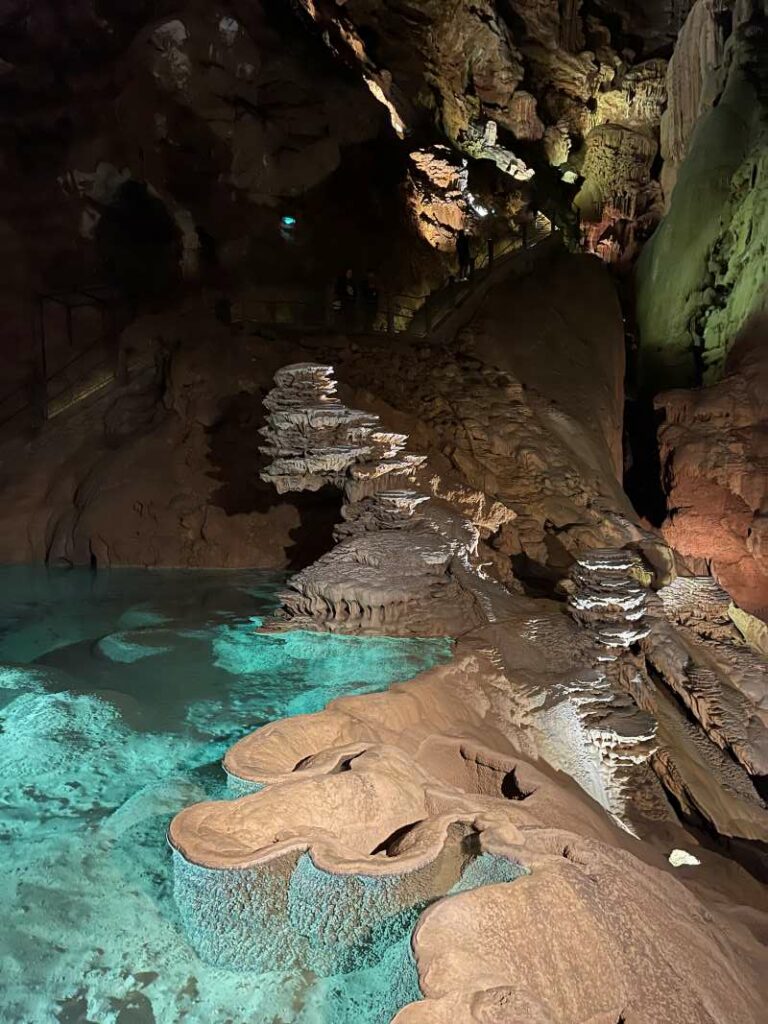
Located less than half an hour away from Rocamadour, experience the unbelievable underground journey of the Gouffre de Padirac. Nakednamed the Devil’s Hole, it is one of the biggest chasm of Europe. You can go down into the cave using the convenient elevators or using the stairs to see the underground river, two lakes and a magnificent dome room full of incredible stalactites.
You will be able to flow on the turquoise water on a flat barge tour to the Grand Dome Room where you will gaze at the incredible beauty of nature’s work. While on the barge the boatman will give you crucial information about the formation of the cave. This is the main attraction of your visit, something very unique that you will remember for years.
Special evening tours are also available. Just as famous cave explorer Édouard-Alfred Martel did in 1889, you will be able to experience the Gouffre to its fullest extent with lamps to illuminate your path in the silence, darkness, and cool.
Make sure to reserve your ticket online ahead of time, a limited amount of visitors are allowed each day and tickets tend to sell out quick in the summer. If you are looking for a restaurant, the Auberge of the Gouffre next door is a great place for a French meal when visiting.
5. Other Places to Visit Nearby
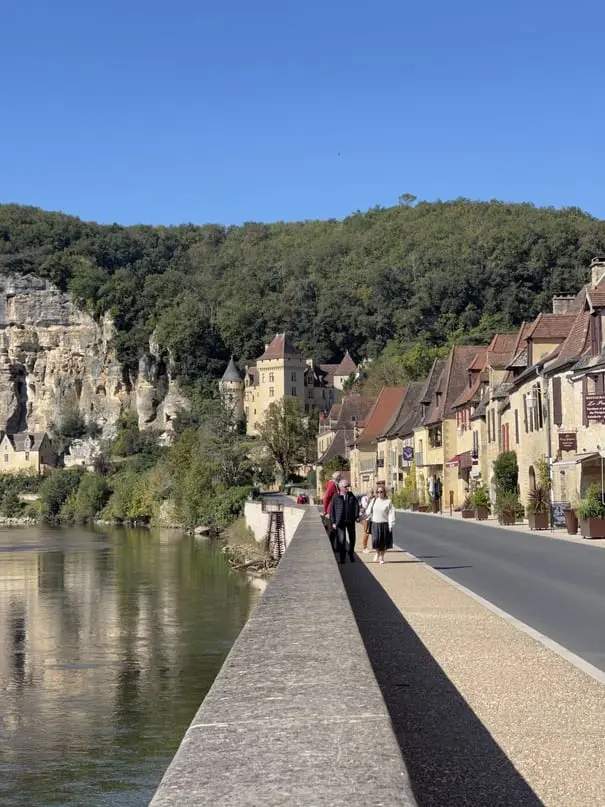
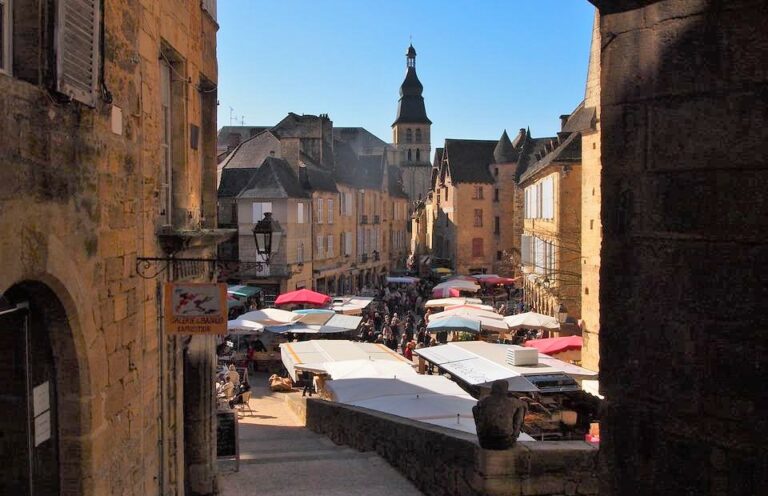
Southwest France is home to the Dordogne region also called Périgord. It is not as widely known or visited by foreign tourists as other regions of France, but it ought to be given how much this lovely region offers.
The region has more caverns than any other region in France, as well as several medieval villages, spectacular castles, and quaint churches. Indeed, the Dordogne region is home to several caves containing prehistoric art, some of the best in Europe.
Additionally, it boasts wonderful cuisine and wine, hospitable residents, fascinating history, and various activities. Here is a list of must-see sites to visit in the Dordogne Valley.
Who would have imagined that one of France’s most picturesque areas could be reached in just two hours by car from the Bordeaux airport? Périgord is the place to go if you want to experience real French culture.
Rocamadour, often undiscovered by many Americans, is a hidden gem worth adding to your bucket list. Despite the distance, the journey to this picturesque village is an experience that will leave a lasting impression.
Want to visit to Rocamadour, France?
Check out our Bordeaux & Dordogne small group tour!
